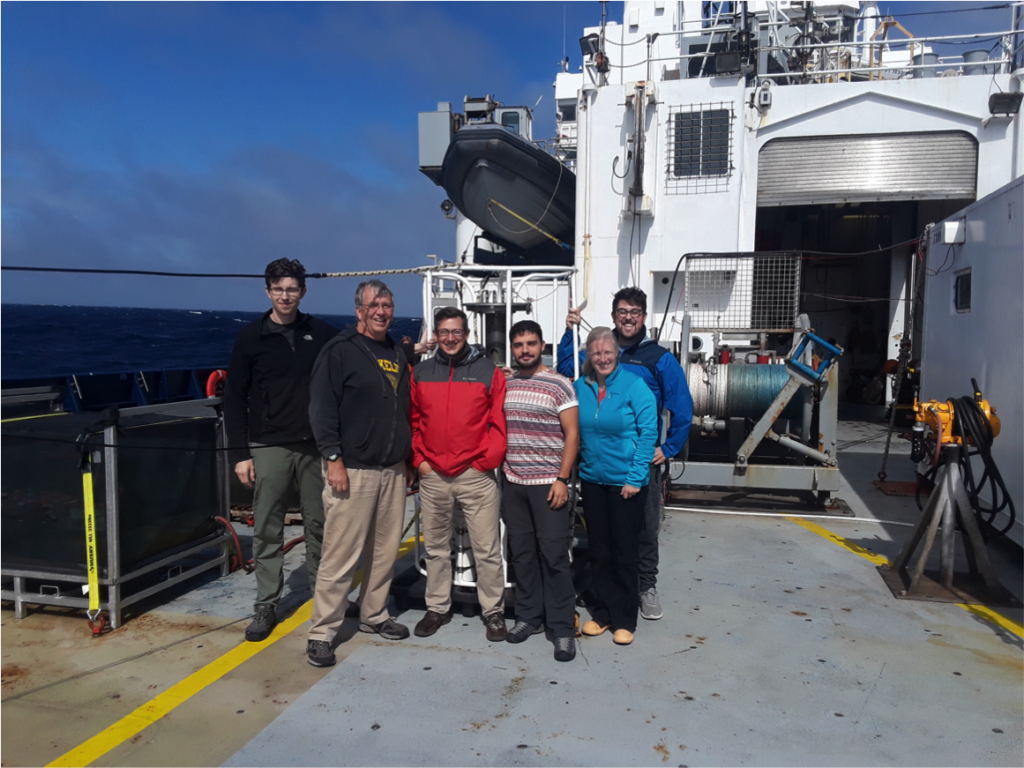by Kris Gomes and Travis Mellett / NORTHEASTERN PACIFIC OCEAN /
The focus of our team is on a group of phytoplankton called diatoms, which are the floating, single-celled plants of the ocean. These organisms, through photosynthesis, use the energy from sunlight and the carbon dioxide we exhale and other sources to create food. Thus, they act as the base of a food web that sustains other animals in the ocean. Iron also plays an important role in the nutrition of these organisms. When iron is too low, diatom growth can be reduced and their photosynthesis less efficient, resulting in low diatom abundance and decreased energy transfer further up the marine food web. In the part of the Pacific Ocean sampled by the Export Processes in the Ocean from Remote Sensing, or EXPORTS, program, iron is at some of the lowest levels in the global ocean and not at levels that can support high diatom growth. That being said, diatoms persist in this nutritionally challenged system, which drives the main goal of our EXPORTS experiments: to understand the impact that nutrients, such as iron, have on the role of diatoms in ocean carbon export.
To help us better understand this nutrient/carbon export relationship, we are performing large incubation experiments and following rates of nutrient use using natural diatom communities that we fertilize with precise amounts of nutrients to simulate natural changes that can occur in the environment. These experiments will improve our understanding of how these changes in nutrient availability affect diatom growth, diatom photosynthetic efficiency, and carbon production, as well as whether diatom species composition shifts or their gene expression alters in response to nutrient amendments.
In addition, we are also using radioactive isotopes of carbon and silica to track changes in diatom nutrient uptake rates and their metabolic activity. Working with the rest of the EXPORTS science team, we will evaluate how shifts in diatom nutrient physiology drive diatoms through different food web pathways that lead to the export of diatom carbon to the deep sea.
In order to understand the growth rates and functions of diatoms in their natural environment, it is also important to study them in their natural conditions, which can be challenging when you are roaming the ocean in a large metal ship. To ensure that our experiments are free from contamination, we take special measures to guarantee that we are collecting iron-clean samples, which is where our trace metal experts come into play.
On this cruise, there are three main techniques (a trace metal trifecta) we use to collect iron-clean water and the diatoms in this water:
One: Trace metal clean rosette system.
This is the bread and butter of collecting clean water samples from depth. We send the bottles down open, and close them at specific depths to bring that water back to the surface for measurements. These are standard sampling devices on all research ships, but ours is special in that we have swapped the nasty metal parts out for clean plastic parts, and the metal wire replaced with a stronger and metal-free Kevlar wire.
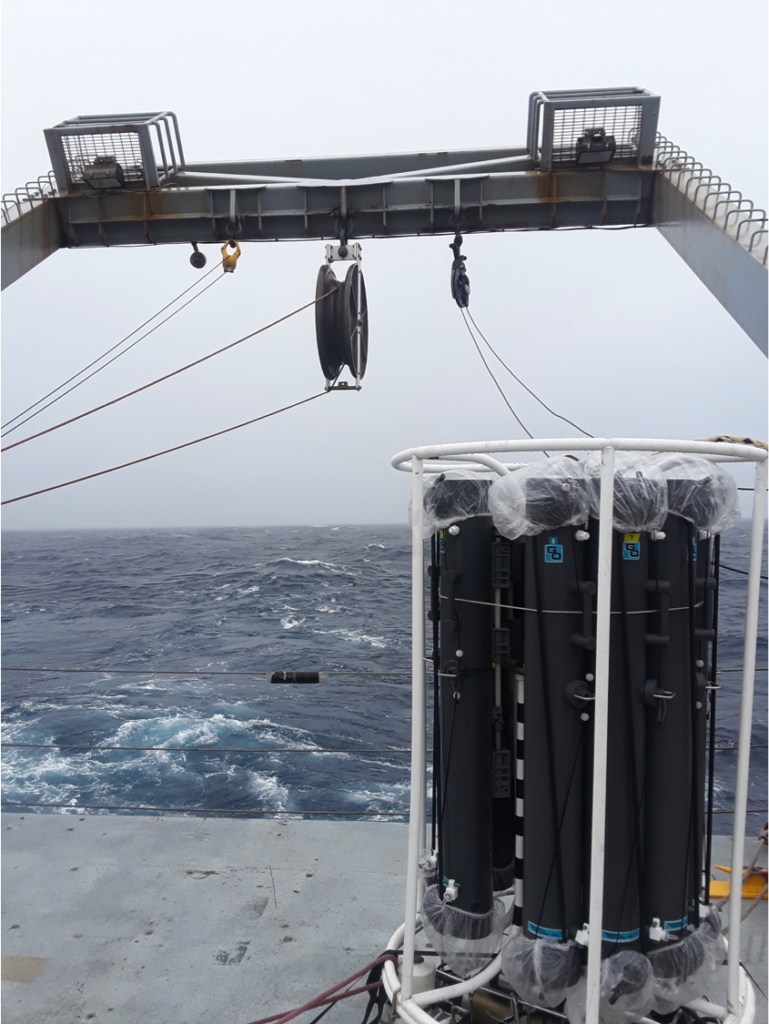
[GoFlo 1LowRes.mp4]
A short montage of the rosette system deployment and recovery from the stern of the ship. Credits: Travis Mellett and Salvatore Caprara
Two: Clean sampling spaces
One of the biggest problems we have with keeping samples clean is dust, which is absolutely riddled with iron and is everywhere aboard the ship. To avoid this, we create spaces where we pump only the finest of filtered air in to fill our delicate lungs and keep dust out of our samples. On the ship we have two places dedicated to clean sampling. The first is out in the trace metal van at the back of the ship where our rosette bottles live and are sampled from hot off of a rosette cast.
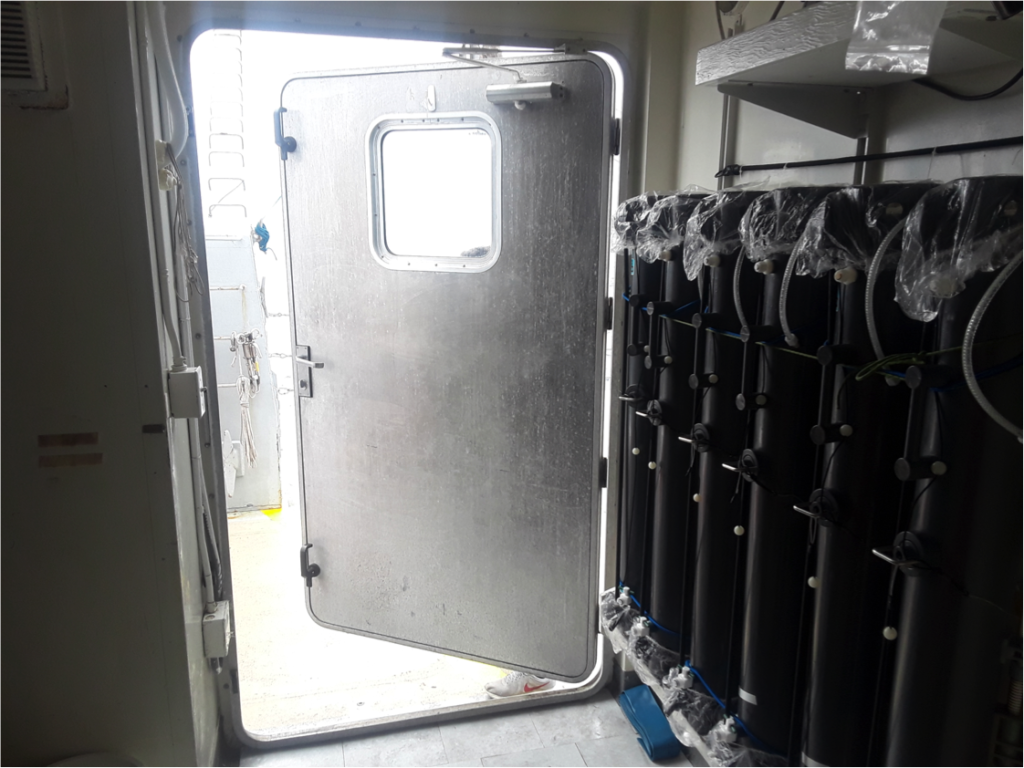
The second place we trace metal chemists feel comfortable enough to let loose and open our sample bottles is in our bubble in the main lab. The space is our clean, plastic fort we have constructed (and decorated) and pumped with clean filtered air (to puff the bubble) so we can still work in the main lab while avoiding the mess of our dusty and rusty neighbors.
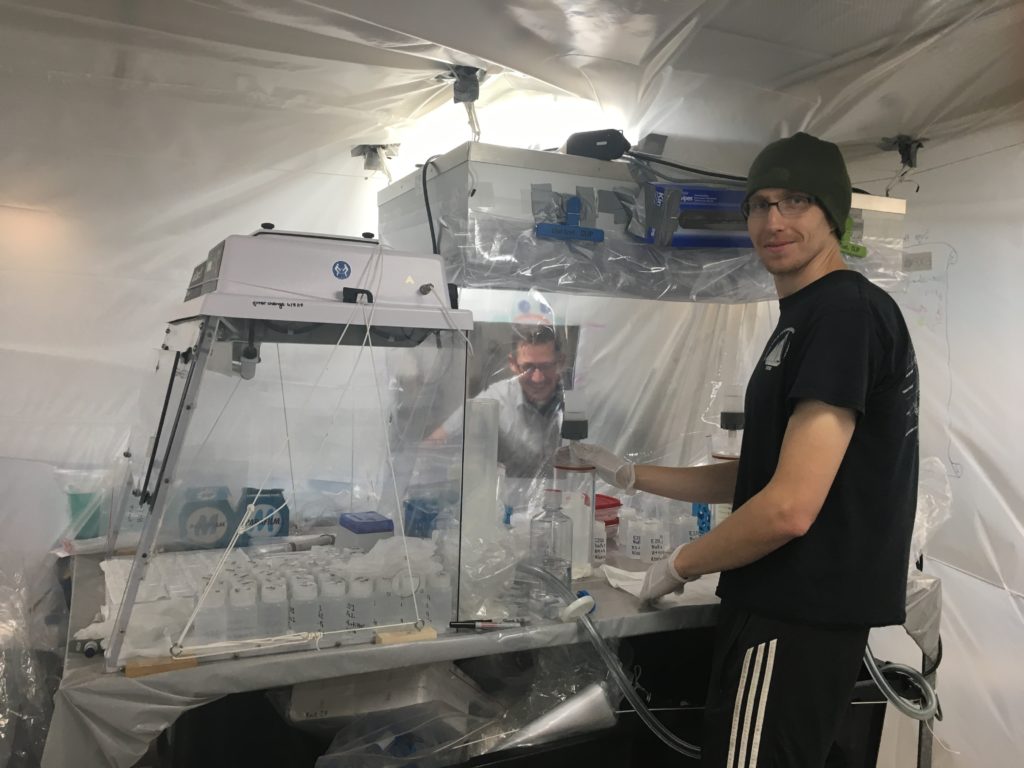
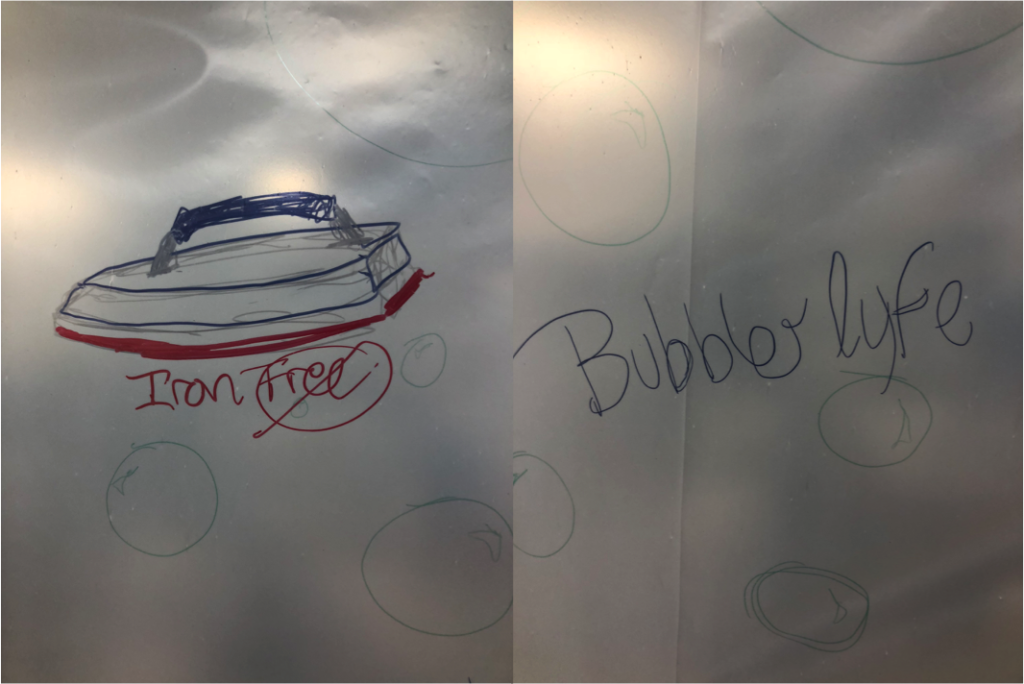
Three: Trace metal surface tow-fish
The fish allows us to collect clean surface seawater by swimming out away from the dirty wake of the ship and sipping up that delicious iron-clean seawater through a plastic tube that we have hooked to a Teflon pump, bringing it right into our bubble.

Diatom Incubations at Sea
After collecting the diatom communities, we conduct a variety of experiments. After fertilizing them with nutrients, we need to allow them time to grow and adapt to their new conditions, while maintaining otherwise natural conditions. To accomplish this, we use large deck board incubators, which are continually filled with flowing sea water collected from the surface to keep them at natural temperatures. The incubators are also wrapped in dark screening to help simulate light levels found within the water column where we collected each sample.
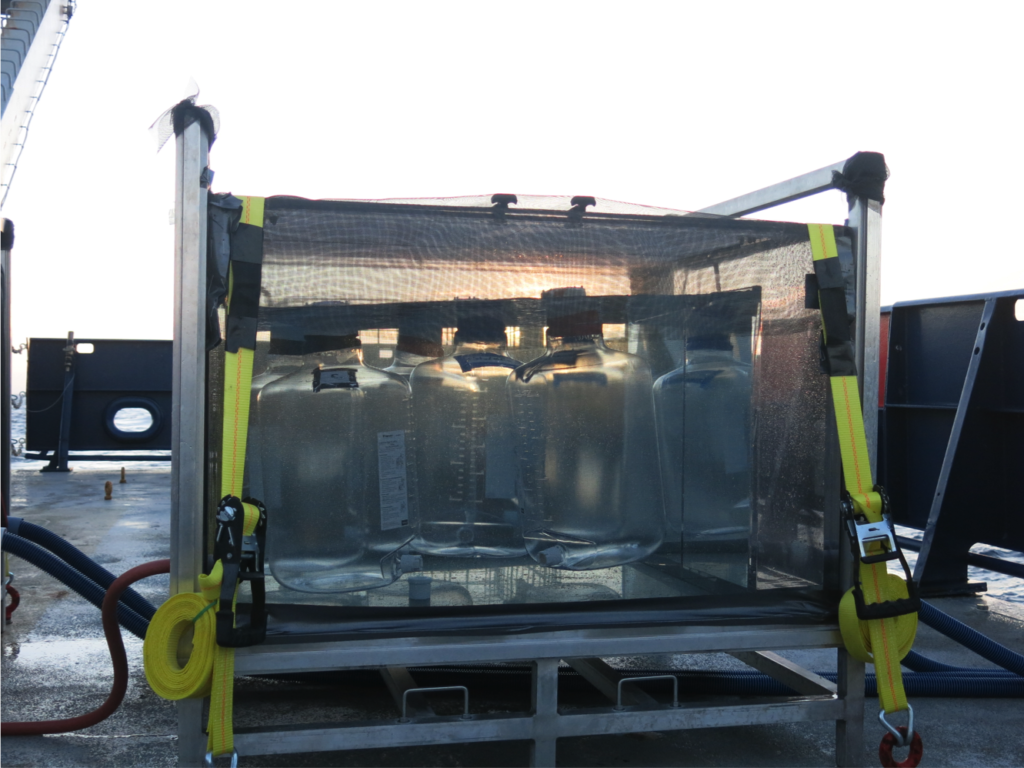
We monitor the response of the diatoms by measuring how fast they take up the nutrients under natural and fertilized conditions. In some experiments we use radioisotopes of silicon and carbon to do this, and we collect the samples in a special van dedicated to radioisotope use. In other experiments we look at how diatom physiology responds to fertilization by measuring what genes diatoms are turning on and off as they encounter different conditions. For these experiments, bottles that have been growing in the incubators are brought inside to the bubble to be harvested and ultimately filtered in the ship’s main lab. Water from the bottles is passed through a series of filters using peristaltic pumps to collect the larger diatoms as well as any other smaller organisms that are in the water. These filters are flash-frozen in liquid nitrogen, acting as a cellular snapshot, freezing the metabolic status of each cell in place for future analysis.
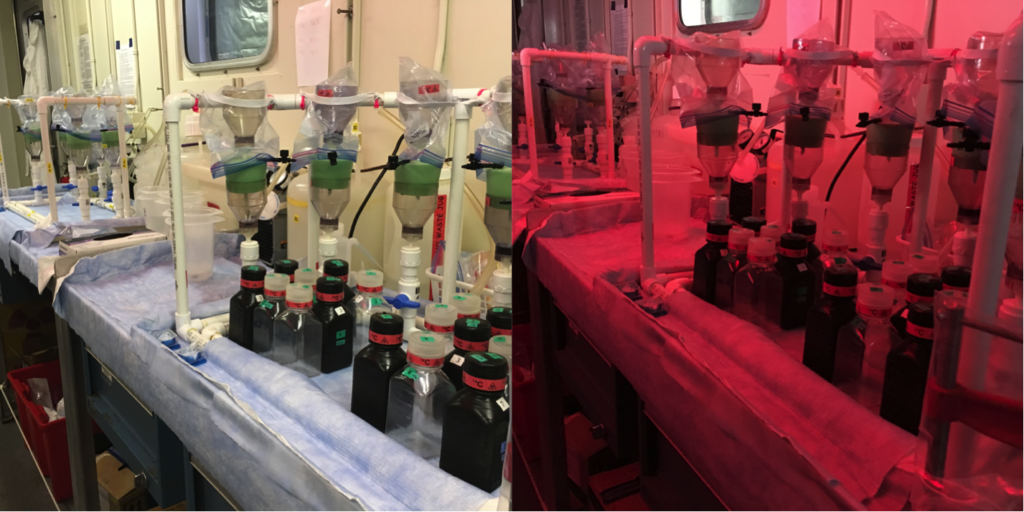
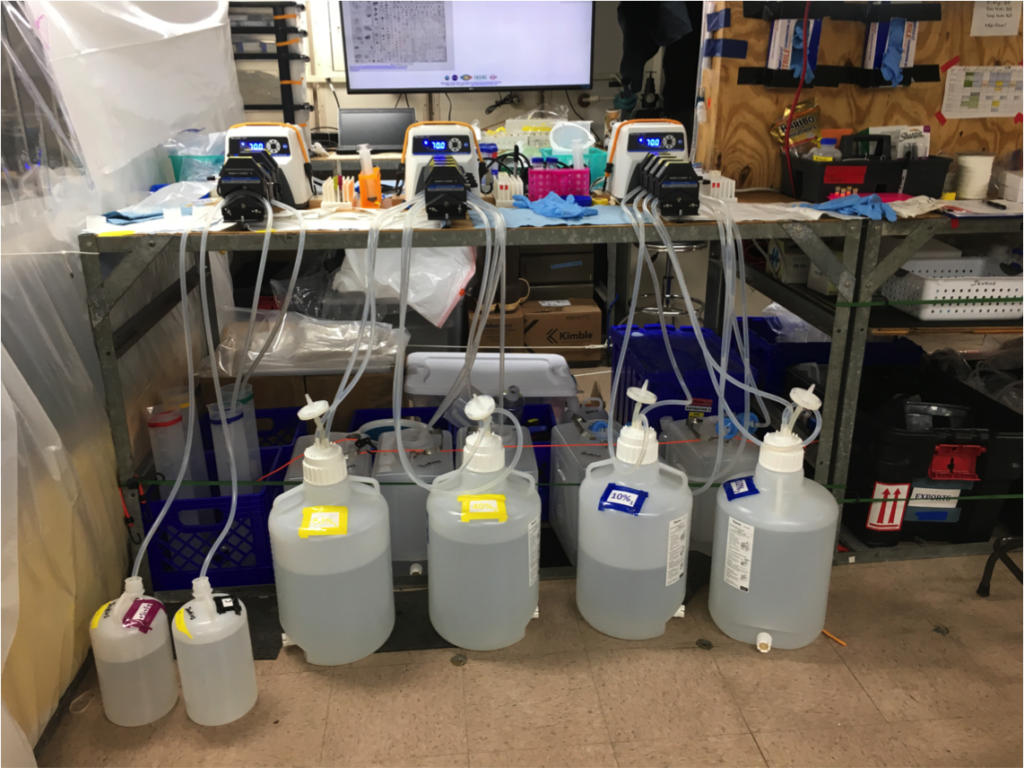
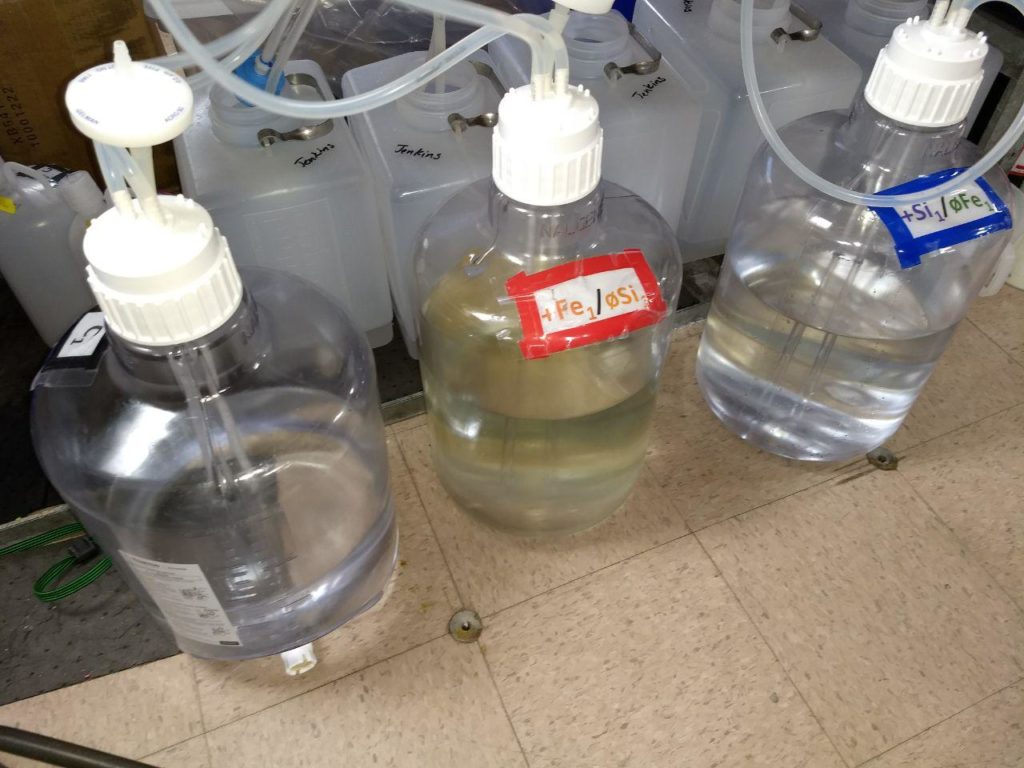
This combination of field and laboratory work, bridging chemistry and biology, will provide data that will improve our understanding of why diatoms follow specific pathways through the food web of the upper ocean, providing a predictive understanding of the processes that lead to carbon export by diatoms, which are one piece of the biological puzzle pumping carbon to the deep ocean twilight zone.
